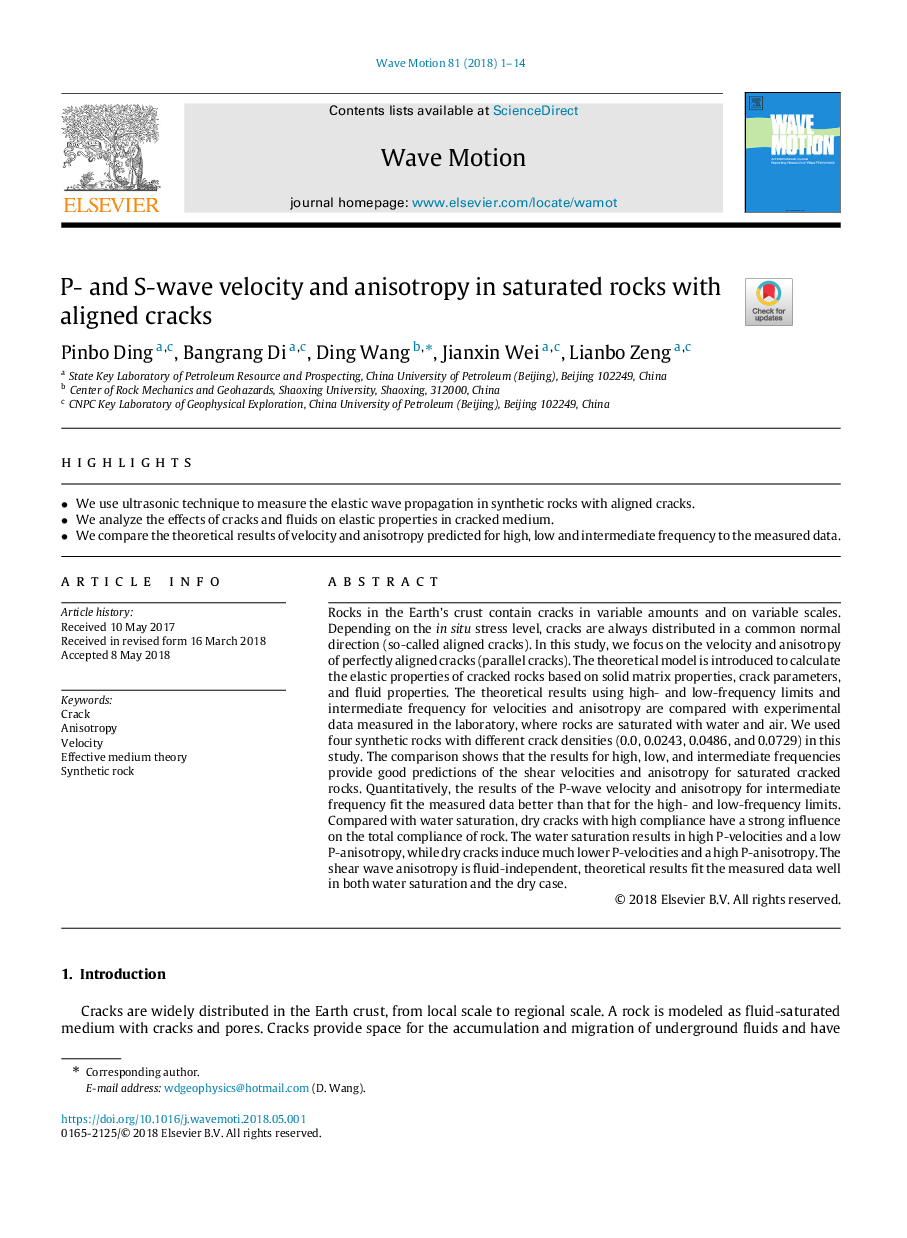| Article ID | Journal | Published Year | Pages | File Type |
|---|---|---|---|---|
| 8256736 | Wave Motion | 2018 | 14 Pages |
Abstract
Rocks in the Earth's crust contain cracks in variable amounts and on variable scales. Depending on the in situ stress level, cracks are always distributed in a common normal direction (so-called aligned cracks). In this study, we focus on the velocity and anisotropy of perfectly aligned cracks (parallel cracks). The theoretical model is introduced to calculate the elastic properties of cracked rocks based on solid matrix properties, crack parameters, and fluid properties. The theoretical results using high- and low-frequency limits and intermediate frequency for velocities and anisotropy are compared with experimental data measured in the laboratory, where rocks are saturated with water and air. We used four synthetic rocks with different crack densities (0.0, 0.0243, 0.0486, and 0.0729) in this study. The comparison shows that the results for high, low, and intermediate frequencies provide good predictions of the shear velocities and anisotropy for saturated cracked rocks. Quantitatively, the results of the P-wave velocity and anisotropy for intermediate frequency fit the measured data better than that for the high- and low-frequency limits. Compared with water saturation, dry cracks with high compliance have a strong influence on the total compliance of rock. The water saturation results in high P-velocities and a low P-anisotropy, while dry cracks induce much lower P-velocities and a high P-anisotropy. The shear wave anisotropy is fluid-independent, theoretical results fit the measured data well in both water saturation and the dry case.
Related Topics
Physical Sciences and Engineering
Earth and Planetary Sciences
Geology
Authors
Pinbo Ding, Bangrang Di, Ding Wang, Jianxin Wei, Lianbo Zeng,
